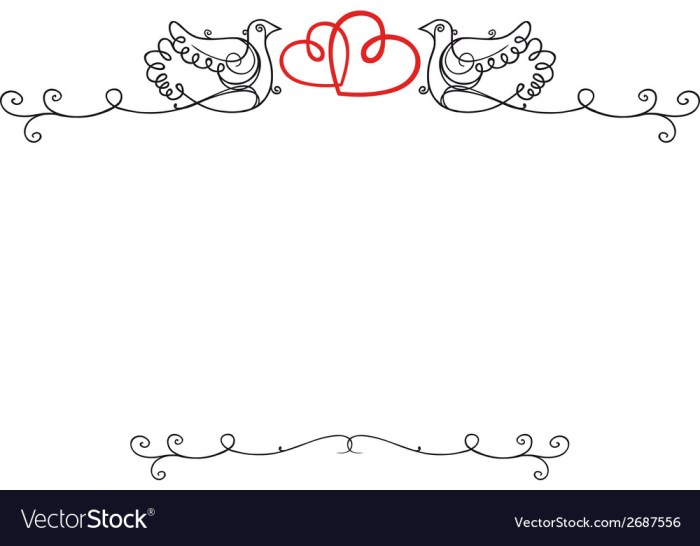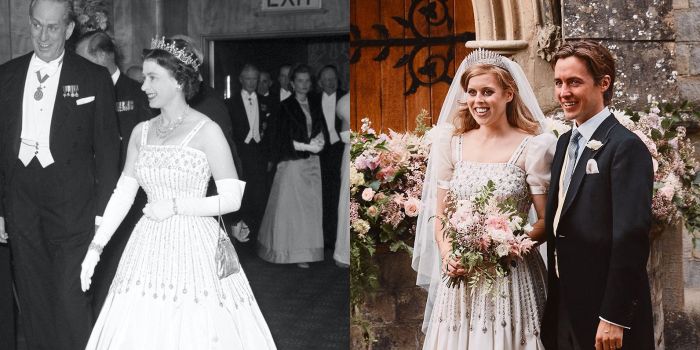Old Timey Wedding Dresses: A Journey Through Bridal History
The term “old timey” evokes a sense of romance, elegance, and bygone eras. When applied to wedding dresses, it conjures images of intricate lace, flowing fabrics, and silhouettes that whisper tales of bygone weddings. This exploration delves into the captivating world of old timey wedding dresses, examining their evolution across different historical periods, the artistry of their construction, and their enduring influence on modern bridal fashion.
Defining “Old Timey” Wedding Dresses, Old timey wedding dresses
The term “old timey” encompasses a broad range of historical periods, each with its unique aesthetic in wedding attire. We’ll focus on several key eras to understand the evolution of these styles.
The Victorian era (1837-1901) is characterized by full, voluminous skirts, often featuring crinolines or bustles. Edwardian dresses (1901-1910) saw a shift towards a more streamlined silhouette, with S-bend corsets creating a dramatic curve. The 1920s brought the flapper era, with its dropped waistlines, shorter hemlines, and beaded embellishments. The 1930s ushered in a more romantic and glamorous style, with bias-cut gowns and delicate lace.
These eras differed significantly in their silhouettes, fabrics, and embellishments. Victorian dresses emphasized volume and ornate detailing, while 1920s dresses embraced a sleek, modern aesthetic. The fabrics also varied greatly, with heavier materials like silk satin and brocade being common in earlier periods, giving way to lighter fabrics like chiffon and georgette in the later eras.
| Period | Silhouette | Common Fabrics | Typical Embellishments |
|---|---|---|---|
| Victorian (1837-1901) | Full, voluminous skirt with crinolines or bustles | Silk satin, brocade, velvet | Lace, embroidery, beading |
| Edwardian (1901-1910) | S-bend corset creating a dramatic curve | Silk, lace, muslin | Lace insertions, delicate embroidery |
| 1920s | Dropped waistline, shorter hemline | Chiffon, georgette, beaded fabrics | Beading, sequins, fringe |
| 1930s | Bias-cut gowns, flowing silhouette | Silk crepe, satin, lace | Lace appliqués, delicate beading |
Fabrics and Construction Techniques

Source: vectorstock.com
The fabrics and construction techniques used in old timey wedding dresses were integral to their unique aesthetic and durability. Understanding these aspects provides insight into the craftsmanship involved.
High-quality natural fabrics like silk, satin, lace, muslin, and velvet were predominantly used. These fabrics possessed luxurious textures and drapes, contributing to the elegance of the dresses. Hand-sewing was the primary construction method, with intricate stitching techniques creating beautiful details and ensuring a high level of finish. The introduction of sewing machines in the later periods significantly impacted production speed and affordability, although hand-sewing remained essential for intricate details.
Creating a simple detail like a Victorian-era sleeve:
- Cut out the sleeve pattern pieces from the chosen fabric (e.g., silk or linen).
- Baste the pieces together, ensuring accurate alignment.
- Hand-stitch the seams using a fine needle and thread, paying attention to even stitching.
- Press the seams open to create a crisp finish.
- Gather the top of the sleeve to fit the armhole of the bodice.
- Hand-stitch the gathered sleeve to the armhole.
Silhouettes and Styles
The evolution of wedding dress silhouettes reflects changing societal norms and aesthetic preferences. Analyzing these changes provides a deeper understanding of the historical context of old timey wedding dresses.
The full, voluminous skirts of the Victorian era gradually transitioned to the more streamlined silhouettes of the Edwardian period. The 1920s introduced the dropped waistline and shorter hemline, while the 1930s embraced bias-cut gowns and a more flowing aesthetic. Specific styles included the A-line, empire waist, and sheath dresses, each reflecting the fashion trends of its time.
Silhouette 1: Victorian Bustle
-A full, bell-shaped skirt with a bustle at the back, creating a dramatic and voluminous shape. The neckline is typically high, often with a lace or embroidered collar. Long sleeves are common, sometimes with puffed or gathered details.
Silhouette 2: Edwardian S-Bend
– A figure-hugging silhouette created by an S-bend corset. The waist is high, just below the bust, and the skirt flows gracefully from the waist. The neckline can be high or low, often featuring delicate lace or embroidery. Sleeves can range from long and fitted to shorter and puffed.
Silhouette 3: 1920s Flapper
– A dropped waistline defines this silhouette, with the skirt falling straight from the hips. The hemline is typically shorter than in previous eras. Necklines are often low, sometimes featuring beading or embroidery. Sleeves can be sleeveless, short, or long and loose-fitting.
Accessories and Details

Source: hearstapps.com
Accessories played a crucial role in completing the old timey wedding dress look, adding layers of detail and reflecting the fashion sensibilities of each era.
Veils, gloves, headpieces, and jewelry were common accessories. Veils, for instance, varied in length and style, from long cathedral veils to shorter birdcage veils. Gloves added a touch of elegance, and headpieces ranged from simple combs to elaborate hats. Jewelry choices also varied, reflecting the tastes of each era.
- Long Cathedral Veil: A long, flowing veil made of delicate lace or tulle, often extending beyond the train of the dress.
- Lace Gloves: Elbow-length or wrist-length gloves made of delicate lace, adding a touch of elegance and sophistication.
- Pearl Necklace: A classic accessory, often composed of pearls of varying sizes, reflecting purity and elegance.
- Floral Headpiece: A delicate headpiece featuring fresh flowers, reflecting the natural beauty of the era.
- Art Deco Brooch: A geometrically-designed brooch featuring intricate detailing, often incorporating gemstones or enamel.
Influence on Modern Wedding Dresses
The enduring appeal of old timey wedding dresses is evident in their continued influence on contemporary bridal fashion. Many modern designers draw inspiration from these historical styles, reinterpreting classic elements for a modern audience.
Lace, beading, and intricate detailing remain popular elements. Silhouettes like the A-line and empire waist, which originated in earlier eras, continue to be popular choices. The romantic and glamorous aesthetic of old timey dresses is also reflected in many modern designs.
- A modern A-line gown featuring delicate lace appliqués inspired by Victorian-era designs.
- A contemporary sheath dress with a dropped waistline and beaded embellishments, reminiscent of the 1920s flapper style.
- A modern gown incorporating a high neckline and long sleeves, echoing the elegance of Edwardian-era dresses.
Essential Questionnaire
What’s the difference between a Victorian and Edwardian wedding dress?
Victorian dresses (1837-1901) were often fuller, with a more romantic, dramatic silhouette. Edwardian dresses (1901-1910) were generally simpler, more streamlined, and emphasized a longer, more elegant line.
How were old timey wedding dresses cleaned?
Dry cleaning as we know it didn’t exist. Cleaning methods varied but often involved careful hand-washing or spot cleaning with gentle solutions. Many gowns were carefully stored to avoid excessive wear and tear.
Where can I find old timey wedding dresses today?
Antique shops, vintage clothing stores, online marketplaces like Etsy, and even some bridal consignment shops are great places to search. Be prepared to do some hunting!
Are old timey wedding dresses comfortable to wear?
Comfort levels varied greatly depending on the era and construction. Some were surprisingly comfortable, while others, due to the corsetry and heavier fabrics, could be restrictive.
